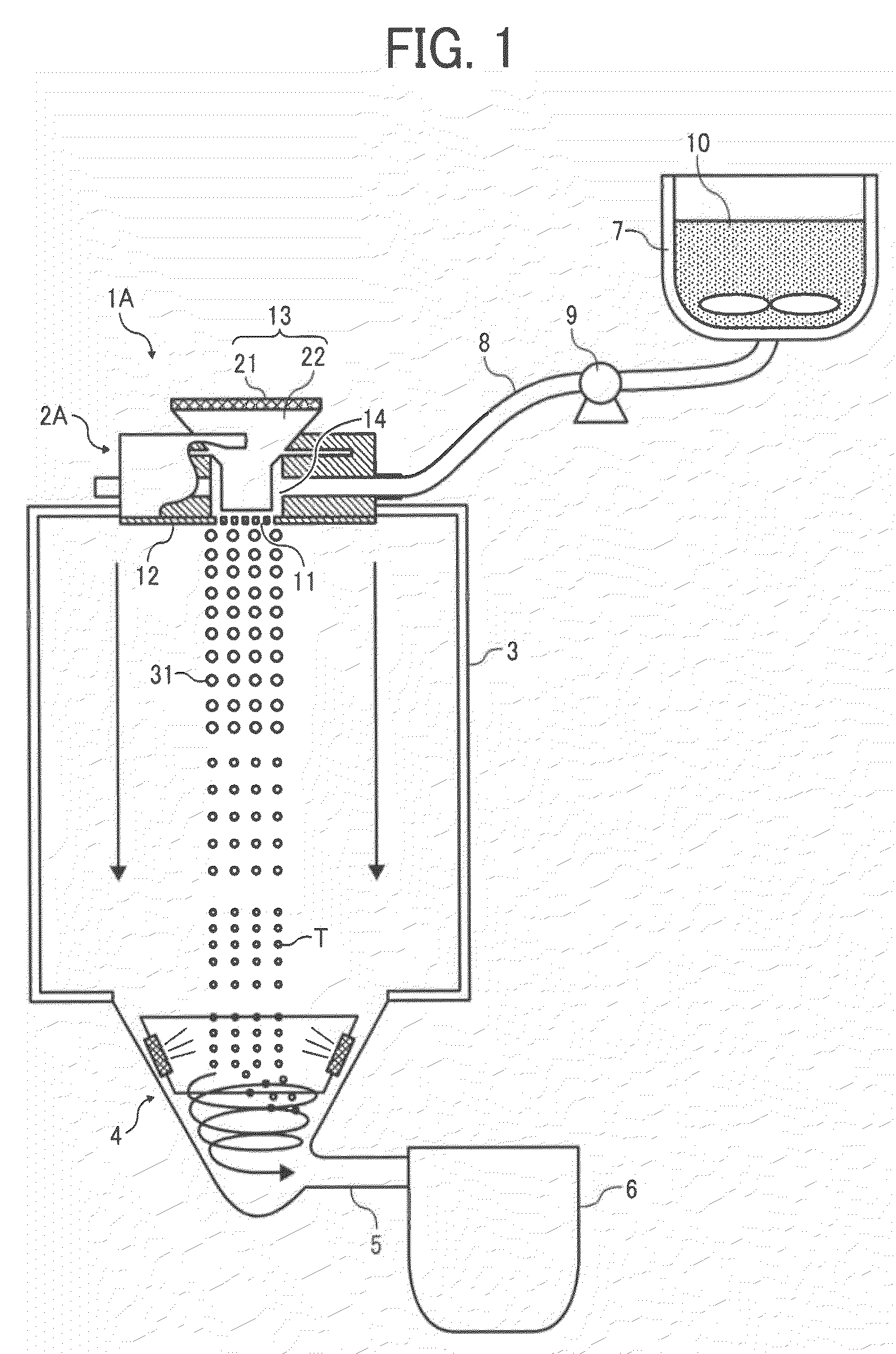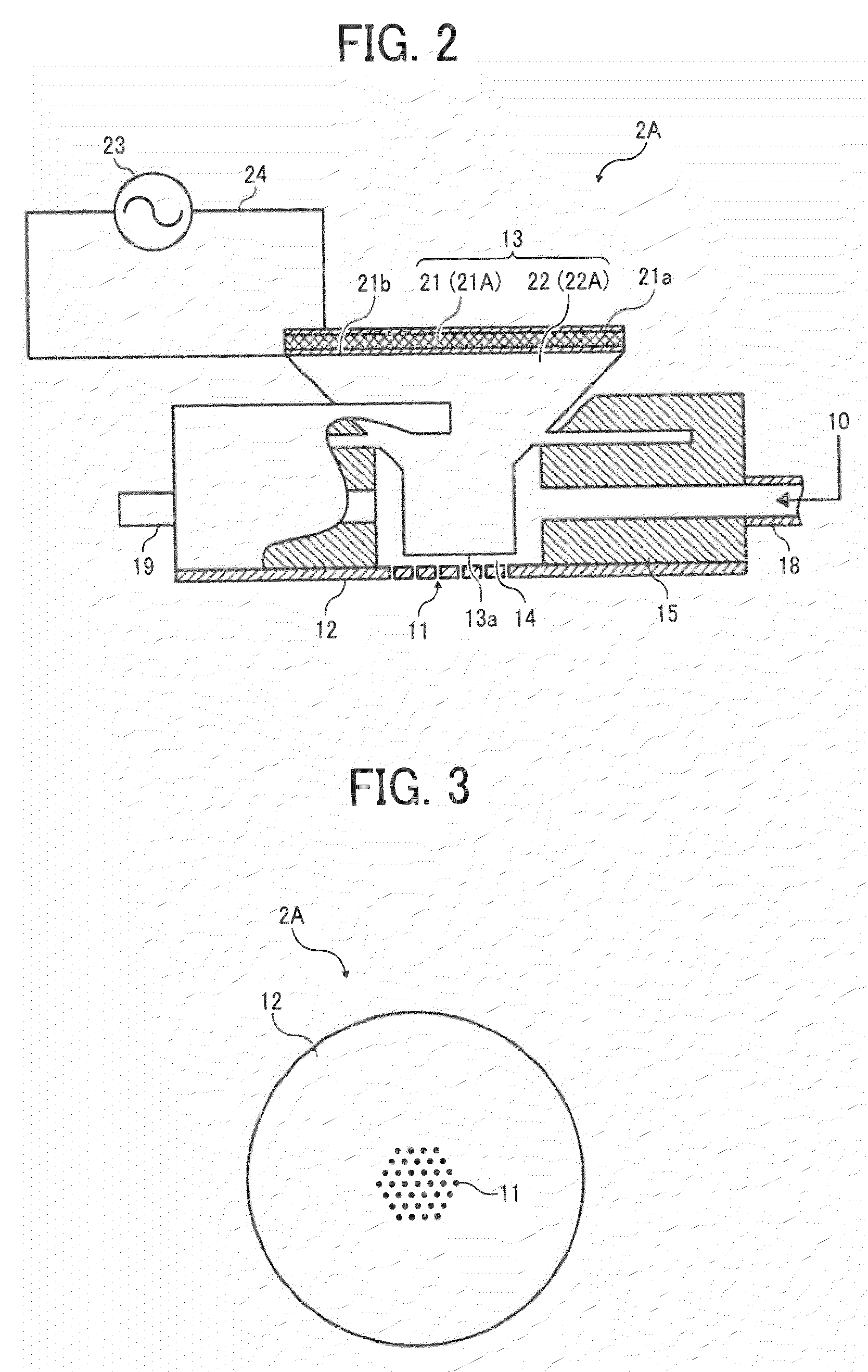Toner, method of producing toner, and image forming method
a technology of toner and image, applied in the field of toner, can solve the problems of shortening the life of the developer, affecting the development process, and the ratio of carrier and toner likely to fluctuate,
- Summary
- Abstract
- Description
- Claims
- Application Information
AI Technical Summary
Benefits of technology
Problems solved by technology
Method used
Image
Examples
example 1
Toner Example 1
Preparation of Colorant Dispersion
[0250]At first, 20 parts of a carbon black (REGAL® 400 from Cabot Corporation) and 2 parts of a colorant dispersing agent (AJISPER® PB-821 from Ajinomoto Fine-Techno Co., Inc.) are primarily dispersed in 78 parts of ethyl acetate using a mixer equipped with agitation blades. The resultant primary dispersion is subjected to a dispersing treatment using a DYNO-MILL so that the colorant (i.e., carbon black) is more finely dispersed and aggregations thereof are completely removed by application of strong shear force. The resultant secondary dispersion is filtered with a filter (made of PTFE) having 0.45 μm-sized fine pores. Thus, a colorant dispersion is prepared.
(Preparation of Toner Components Liquid)
[0251]At first, 15 parts of the colorant dispersion, 100 parts of a 20% (solid basis) ethyl acetate solution of the polyester resin (having a weight average molecular weight of 20,000) which is used for the wax dispersion, 30 parts of the w...
example 2
Toner Example 2
[0261]The toner components liquid prepared in Toner Example 1 is supplied to the liquid droplet injection unit 2A including a horn vibration unit of the toner production apparatus 1A illustrated in FIG. 1.
[0262]The thin film 12 is a nickel plate having an outer diameter of 8.0 mm and a thickness of 20 μm on which circular nozzles having a diameter of 10 μm are provided. The nozzles are formed by electroforming. The nozzles are formed within the central region having a substantially circular shape having a diameter of about 5 mm, so that the distance between each of the nozzles is 100 μm (like hound's-tooth check). The number of effective nozzles is about 1,000.
[0263]The toner components liquid is discharged from the nozzles to form liquid droplets under the following conditions.
[0264]Flow rate of dried air: 2.0 L / min for nitrogen gas for dispersion, 30.0 L / min for inner dried nitrogen gas
[0265]Drying entrance temperature: 60° C.
[0266]Drying exit temperature: 45° C.
[02...
example 3
Toner Example 3
[0271]The procedure for preparation of the black toner (b) in Toner Example 2 is repeated except for replacing the wax dispersion W-1 with the wax dispersion W-2. Thus, a black toner (c) is prepared.
[0272]The toner (c) has a weight average particle diameter (D4) of 5.0 μm and a very narrow particle diameter distribution (D4 / Dn) of 1.01. The toner (c) is continuously produced for 5 hours without causing nozzle clogging.
PUM
| Property | Measurement | Unit |
|---|---|---|
| weight average particle diameter | aaaaa | aaaaa |
| frequency | aaaaa | aaaaa |
| aperture diameter | aaaaa | aaaaa |
Abstract
Description
Claims
Application Information
 Login to View More
Login to View More - R&D
- Intellectual Property
- Life Sciences
- Materials
- Tech Scout
- Unparalleled Data Quality
- Higher Quality Content
- 60% Fewer Hallucinations
Browse by: Latest US Patents, China's latest patents, Technical Efficacy Thesaurus, Application Domain, Technology Topic, Popular Technical Reports.
© 2025 PatSnap. All rights reserved.Legal|Privacy policy|Modern Slavery Act Transparency Statement|Sitemap|About US| Contact US: help@patsnap.com



